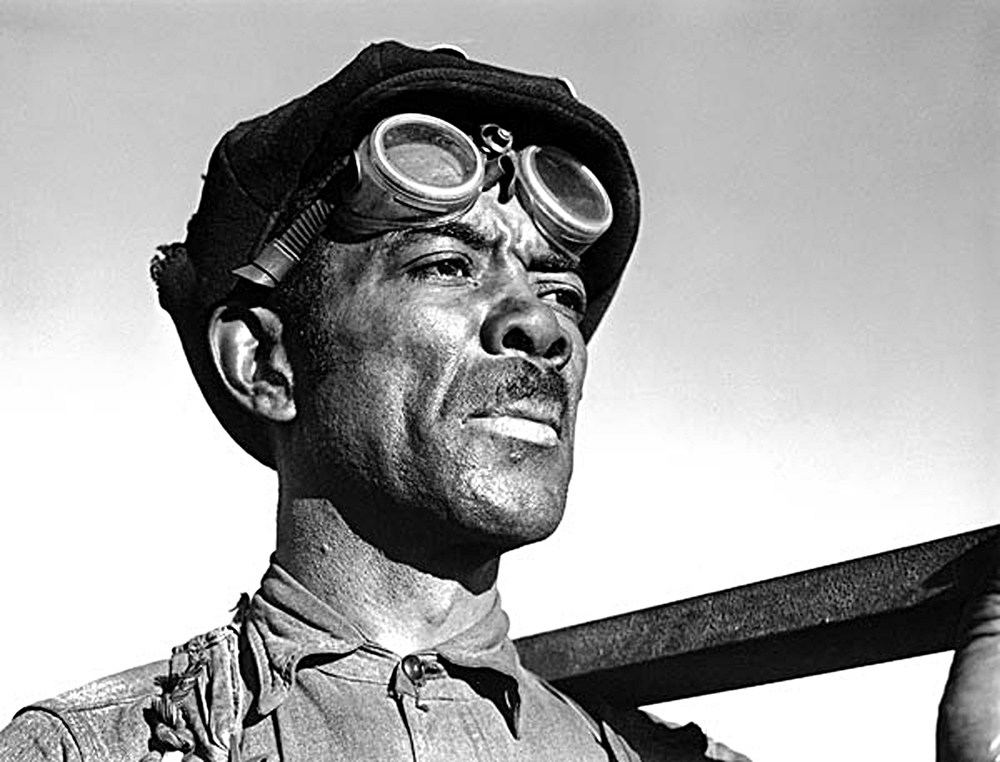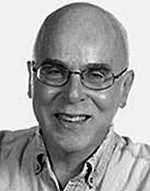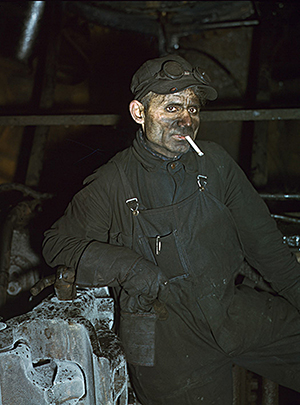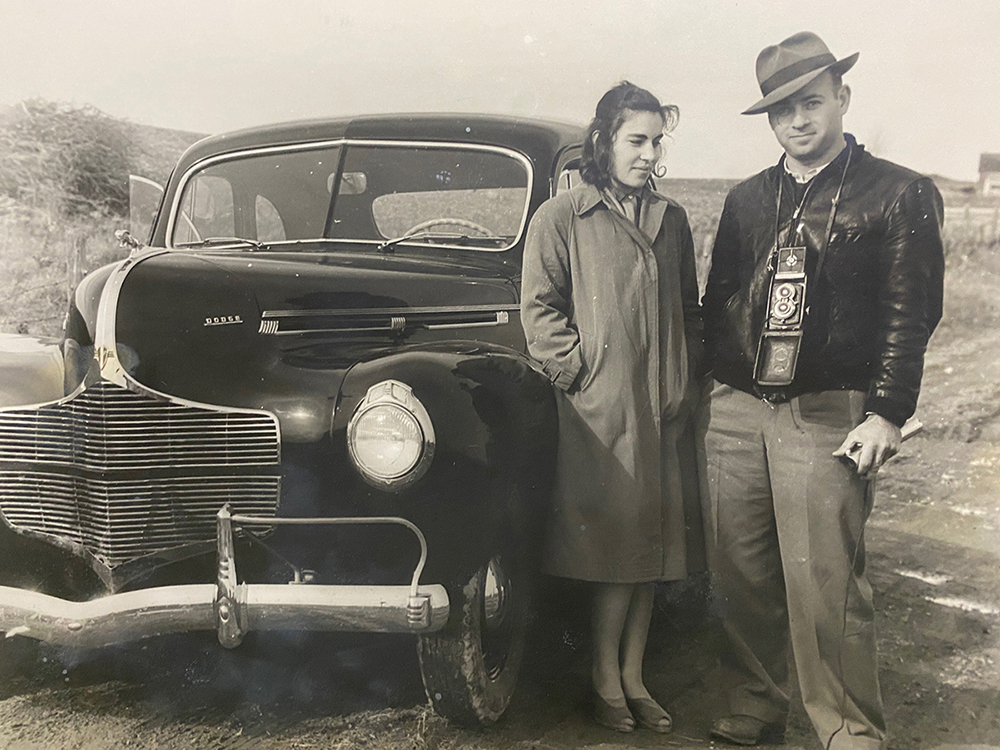
Frank Williams, an Illinois Central car repairman in Markham, Ill. (PHOTO BY JACK DELANO)
When “Railroaders: Jack Delano’s Homefront Photography” opens at Peoria Riverfront Museum on Oct. 9, it will be a return of sorts for Delano, who visited Bradley University in 1988 as the first guest in BU’s Bunn Lectureship in Photography.

Howard Goldbaum
Delano was “a humanitarian with a deep social consciousness,” says Howard Goldbaum, a former Bradley University photography professor who befriended and worked with Delano and his wife Irene when they all lived in Puerto Rico. “His appreciation for the worth of all peoples is evident in his work for the Farm Security Administration (FSA), and in his later images from Puerto Rico.”
Organized by the Center for Railroad Photography & Art in partnership with Chicago History Museum, and sponsored by Holly and Bon French, the Visionary Society, and the Illinois Arts Council, the exhibit continues through Jan. 2 and features dozens of photos from a collection of some 2,500 at the Library of Congress.

William London, a roundhouse worker for the Chicago & Northern Western Railway in Chicago. (PHOTO BY JACK DELANO)
Created from November through April in 1942 and 1943 for the federal FSA, Delano’s portraits of railroads’ vital home-front contributions during World War II concentrated on people more than places, processes or equipment – all to help rally public support for the “total-war” approach to the conflict.
The ambitious, enduring exhibit demonstrates that the 1940s railroad industry nurtured its own subculture that transcended individuals’ backgrounds. Through images of railroad men and women, the display demonstrates how members of one industrial community can represent the diversity and unity of U.S. society.
Delano had a knack for recording subjects who reflected the country and that time, reflecting the nation’s racial and class diversity, varied families and neighborhoods united in a common cause.
“I’ve always been more interested in people than things,” he told me in an interview decades ago. “What’s compelling to me is people and their environment.”
A trip through time and place; the images show the challenges and lives of that industry, vital to fighting global authoritarianism, part history and part propaganda.
“In a way, every journalist, every artist, is an advocate,” Delano told me, adding that the assignment and program were meaningful to him and the nation.
“I believed sincerely in the Farm Security Administration program. It was important to the country,” added Delano, who died in 1997.
Delano’s glimpse of the U.S. railroad industry, workers and culture shows some of the abilities of FSA photographers, talents such as Dorothea Lange, Gordon Parks, Arthur Rothstein and others recruited by Ray Stryker to record the country during the Great Depression and World War II.
“In only a few short months, Delano created perhaps the best overall portrait of railroading and its people and culture of any photographer in the United States,” said John Gruber, founder of the Center for Railroad Photography & Art.
The sector was a cross-section of regular Americans.
“The railroad industry fostered its own communities and networks that cut across ethnic and religious lines,” Gruber said. “The dignity of everyday work and the stories of individual railroaders and their descendants are explored.”
Delano’s singular achievement was but one aspect of an extraordinary and gifted artist.

Jack and Irene Delano on assignment for the FSA. (SUPPLIED PHOTO)
Born in 1914, Delano was 9 when his family moved to the United States, where as a young man he studied photography, illustration and music at Philadelphia’s Settlement Music School and at the Pennsylvania Academy of the Fine Arts until 1932. Soon after, the FSA hired him for $2,300/year.
He visited Puerto Rico in 1941 and moved there following military service from 1943-46. In that U.S. territory, Delano also helped establish its first educational TV station, produced documentary and educational films and composed musical scores, as well as ballets, chamber music and orchestral works, and collaborated with Irene on children’s books.
“He was a creative polymath,” said Goldbaum, who taught at Bradley from 1977-2002, after which he taught at the University of Nevada-Reno until retiring last year. “I knew of his FSA work from my graduate studies.”
Goldbaum, who after editing a trade magazine moved to Puerto Rico in 1974 as chief photographer of a newspaper, said Delano had an impact on generations of photojournalists.
“I was very much influenced in my approach to photojournalism and documentary photography by all the FSA photographers, and Roy Stryker’s work ethic and social concerns,” Goldbaum said. “He was an inspiration to me early in my career [and] still is.”
As visitors to the Riverfront Museum may find, Delano continues to inspire.
